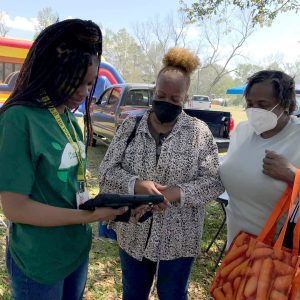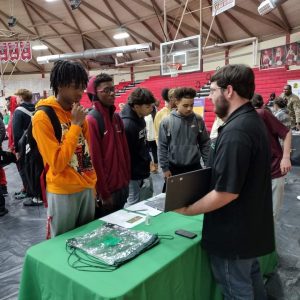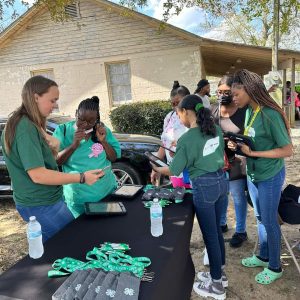About 4-H

Alabama 4-H at Auburn University Tech Changemakers in 2023
The 4-H Tech Changemakers program trains and equips teens to bring transformative digital skills to their communities.
Empowering Teens, Bridging Divides
Teen Leadership
100% felt the program provided them with leadership opportunities
Community Contribution
86% learned ways to contribute to their communities
Sense of Belonging
100% felt a strong connection to the Tech Changemakers program
Impact on Adults
Positive Feedback
Overwhelmingly positive feedback from adults who participated in workshops led by Tech Changemaker teen leaders.
Skills Acquisition
91% strongly agree that the teen leaders demonstrated strong knowledge.
Practical Application
55% strongly agree that new skills were effectively conveyed, and 61% strongly agree on the practical applications of technology in work and life.
Broader Public Benefit
Tech Changemakers has a ripple effect on community building and advocacy for digital inclusion. It creates a supportive environment and fosters a sense of community and belonging. It positively influences the broader public’s perception of technology and its potential to bridge opportunity gaps.
Digital Empowerment
Trained teen leaders are disseminating digital skills and knowledge in their communities.
Increased Abilities
Participants reported increased abilities in areas such as feeling safer online (33%) and improved efficiency in email communication (15%).
Willingness to Attend
83% of participants expressed willingness to attend another session taught by a Tech Changemaker.
Next Steps
- Continued efforts to empower teens as advocates for digital inclusion.
- Expansion of workshops and training sessions to further address inequitable access to technology.
- Focus on professional development opportunities for both teen leaders and adult participants.
Visit www.alabama4h.com for more information.
New June 2024, Alabama 4-H Tech Changemakers Annual Report, 4HYD-2552





